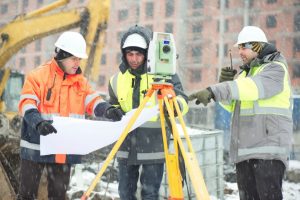What Is GPR, and How Exactly Does It Work?

Whether you are new to concrete or think you know almost everything about it, it is necessary to understand how GPR works.
Whether you are new to concrete or think you know almost everything about it, it is necessary to understand how GPR works. GPR refers to ground penetrating radar, which can collect data from underground locations and even peer through concrete. It can also analyze the data that it gathers.
GPR has many benefits, one of which is locating underground utilities. Utility lines can provide homes and businesses with gas, electricity, water, cable television, and Internet service. GPR can show you the locations of all these utilities so you can avoid cutting through them before you start working with the surrounding concrete. Another benefit of GPR is that it allows you to avoid damaging rebar, which is necessary for the structural integrity of whatever surface you are working on. Lastly, GPR lets you find post-tension cable and determine the extent of this cabling so that you and your crew can work more safely.
Below you can learn about some of the ways that GPR works.
The Basics
In order to penetrate the ground or concrete, a high-frequency radio signal is sent into the surface, which then bounces back to a receiver. The data is then recorded by and stored in a computer, which estimates how long the signal pulses. More specifically, it measures how long it took for the signal to bounce back once it was fired. The pulse time illustrates how deep it went into the ground and if it hit any targets. The computer captures this data and interprets it for the user on an LCD screen.
Data Collection
Different types of GPR are needed for different objects underground depending on how deep and how big the target is. Signals sent from the GPR can bounce back and forth between the target and the receiver up to one thousand times per second. The user can either choose to analyze the collected data in the field, or wait until later. If the user saves it for later, then it can be better analyzed, and those involved can spend more time with the data. However, accurate data analysis can be affected by extraneous factors such as soil type and the materials that the signals travel through.
Data Collection in Concrete
GPR is most often used to find targets that are embedded in concrete. These include rebar, conduits, and post-tension cables. GPR can find and scan these targets to determine the thickness of the concrete, and then generates either a two-dimensional or three-dimensional map of the area.
G & M Services Is Here to Help!
G&M Services is proud of our employees and the dedication they have for safety in the workplace. We reward our employees for positive safety practices. We incorporate weekly and monthly discussions and meeting to ensure that all involved are aware of how to handle equipment and potential situations that could occur during a project.
G&M Services offers services in the way of concrete drilling and sawing, concrete scanning and FireStop. To get started with us, call today at 410-787-8828 or visit our contact page. Follow the official company page today on Google+, Facebook, Twitter and LinkedIn.








